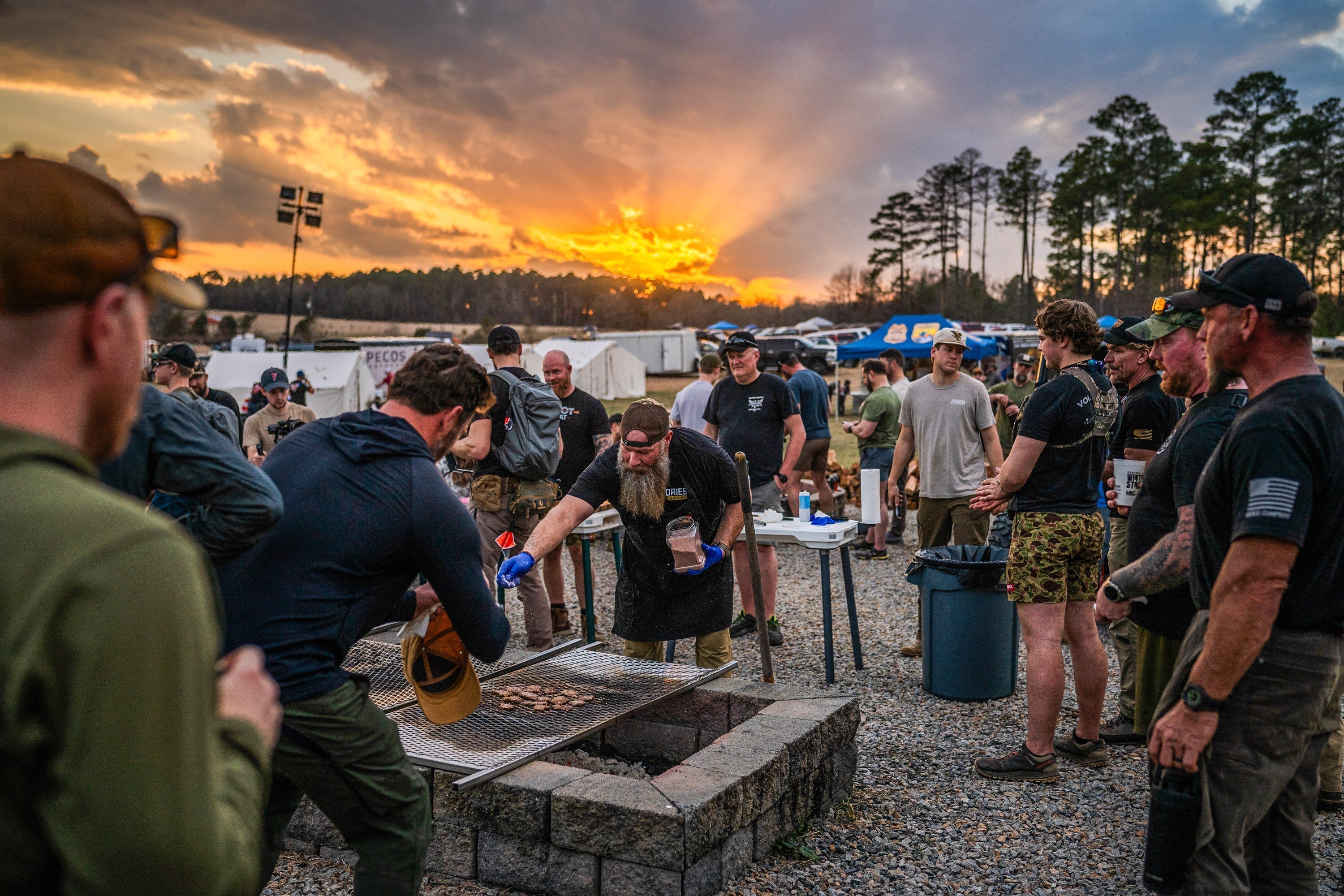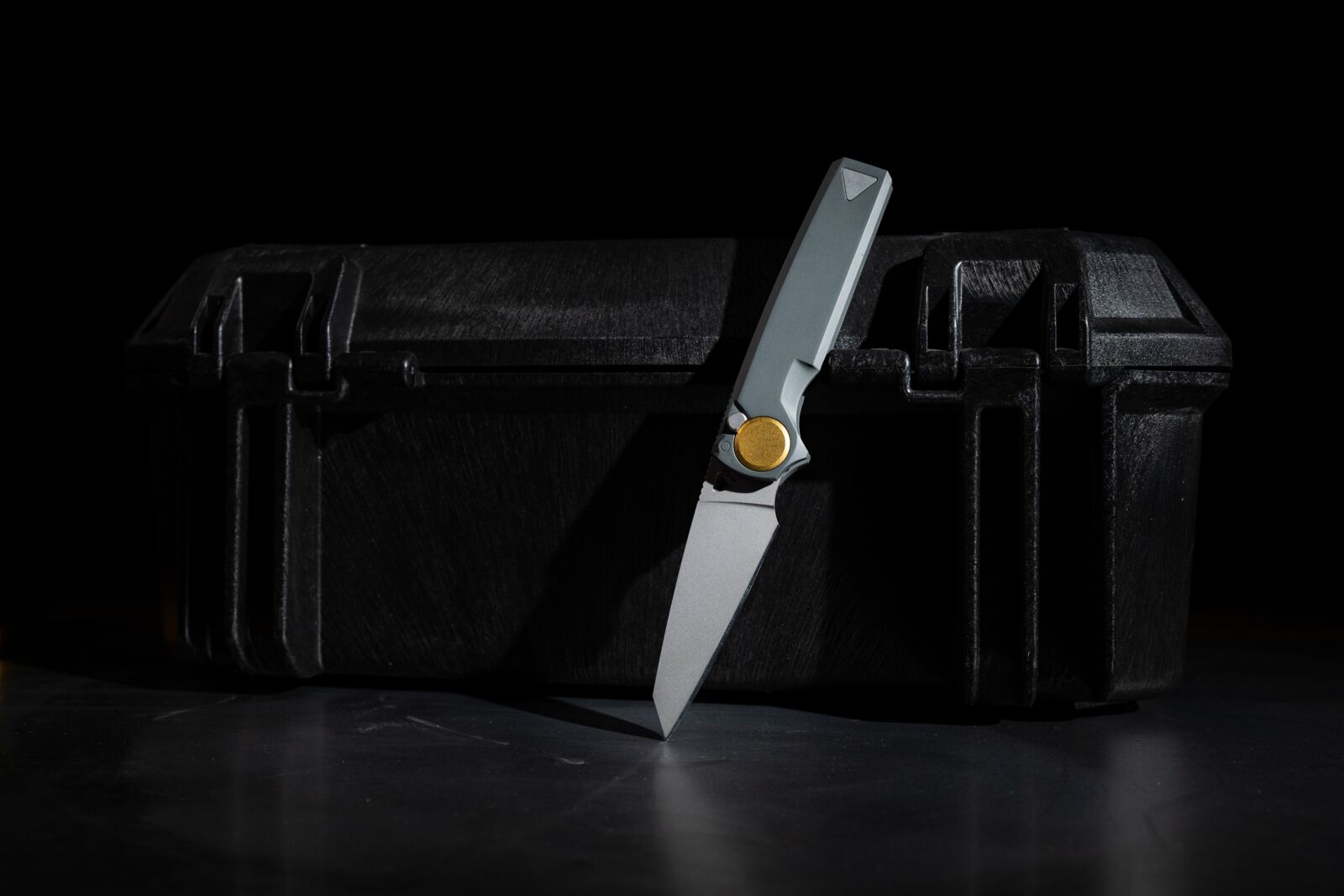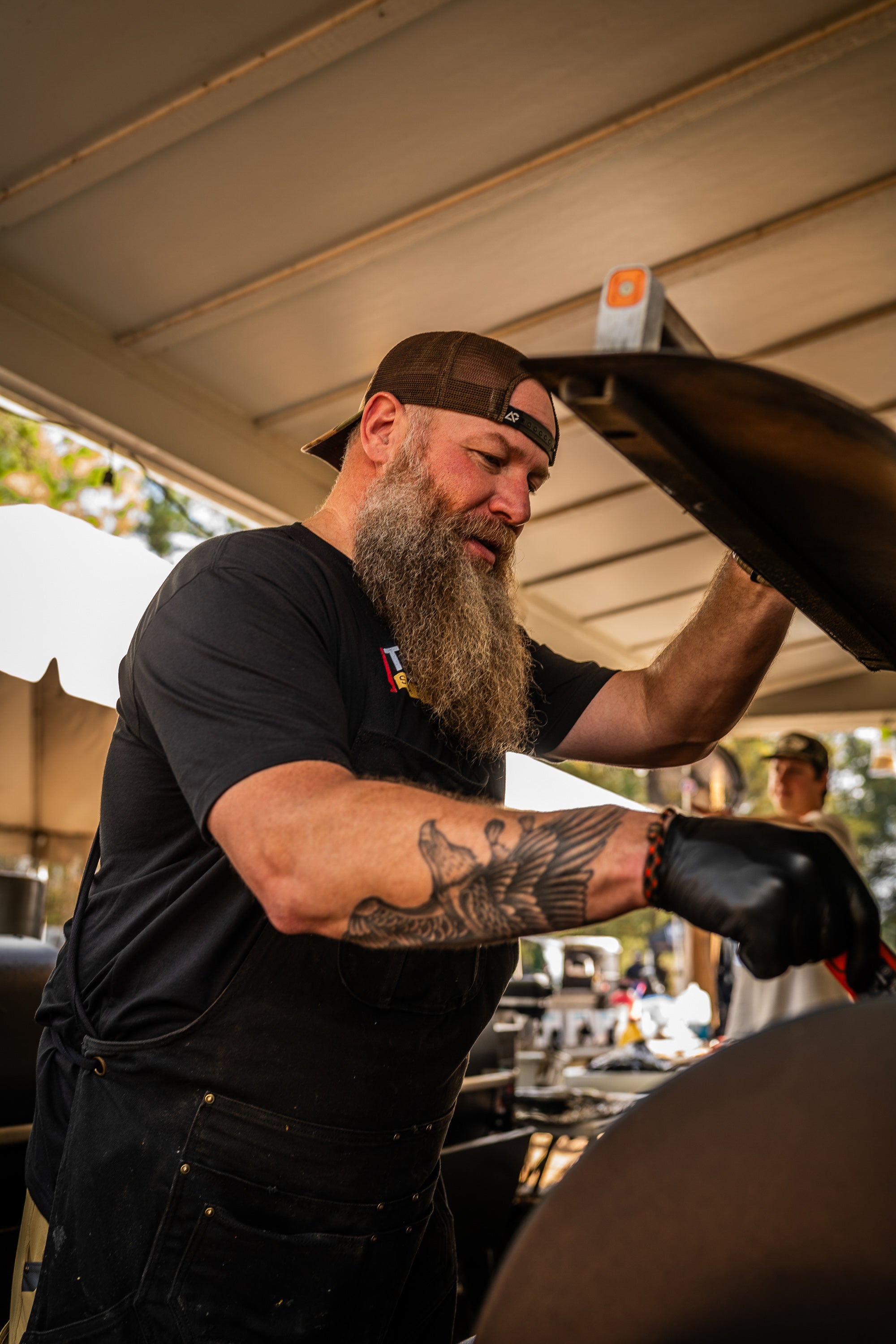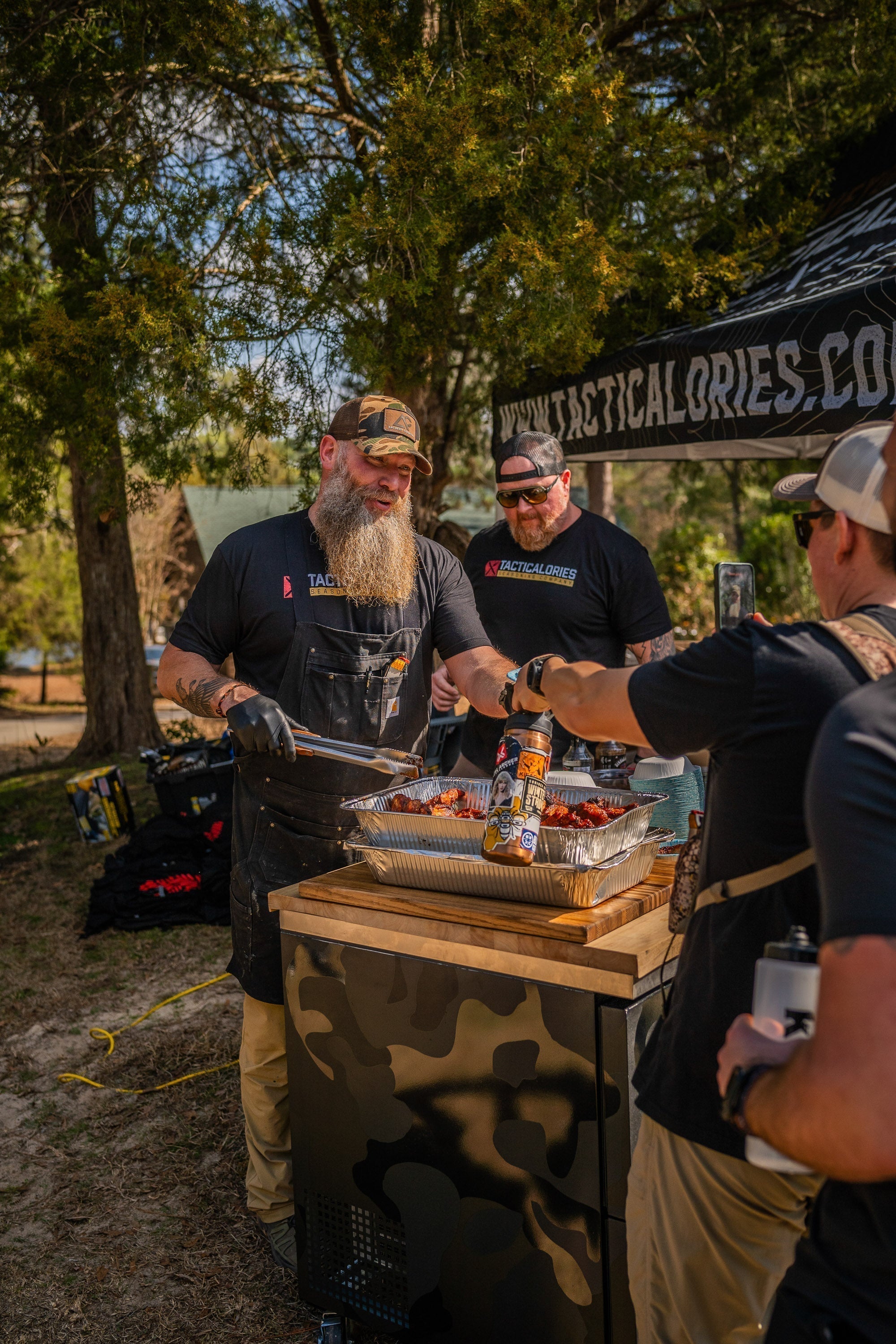If you’re going to cook over real fire, the gear you bring matters.
You don’t need a garage full of fancy gadgets or smart tech that connects to an app. You need tools that work. That take a beating. That show up every time you strike a flame and don’t flinch under heat, fat, smoke, or steel.
I’ve cooked all over—on tailgates, in camps, over riverbeds and ranch coals. And I can tell you with full confidence: gear won’t make you a great cook, but the wrong gear will sure as hell hold you back.
 Start with the blade.
Start with the blade.
You need a real knife. One that holds an edge, feels good in the hand, and slices clean. Whether you’re trimming fat off a brisket, breaking down a shoulder, or slicing a steak for the plate—your knife is your foundation. Dull blades are dangerous and disrespectful to good meat. Invest in one solid blade, learn how to use it, and keep it sharp.
Next: fire. Lighter fluid has no place here. I don’t want my food tasting like diesel fumes. Use a chimney starter. Pack it with paper, fill it with lump charcoal, light it, and let the fire do the rest. It’s clean. It’s fast. It’s reliable. Fire should taste like smoke and sear—not chemicals.
Speaking of charcoal, lump is the way to go. Briquettes are fine if you’re in a pinch, but lump burns hotter, lights faster, and gives you that raw, untamed heat you want when searing over live flame. From there, you build your flavor.
Use real wood. Hardwood chunks—oak, hickory, mesquite, cherry, apple. Start with charcoal for your base, then add wood to layer in smoke. That smoke is your seasoning. What you burn becomes what you taste, so burn with intention.
 Let’s talk cast iron.
Let’s talk cast iron.
If you’re not using it, you’re missing the magic. A well-seasoned skillet or Dutch oven is a weapon in the right hands. You can fry bacon, sear a tomahawk, caramelize onions, or bake a skillet biscuit without blinking. Cast iron holds heat, builds flavor, and goes straight into the flame without whining. Treat it right—keep it seasoned, dry it properly, and it’ll outlast you.
Tongs are overlooked, but you’ll notice when they suck. Get a pair long enough to keep your hands out of the fire, and strong enough to flip a big cut without flexing. Nothing ruins a fire-side cook like gear that folds under pressure.
And don’t skimp on your cleaning kit. Bring a grill brush, chain mail scrub for cast iron, a rag for your blade, and a small bottle of oil. You don’t need much. But if you take care of your tools, they’ll take care of the food—and the people you’re feeding.
Cooking with fire isn’t about collecting things. It’s about using what works and knowing why. Every piece of gear should have a job. Every tool should earn its place. If it doesn’t, leave it behind.
This isn’t a game. This is ancestral. Flame, fat, steel, and meat. That’s it. Keep it honest. Keep it sharp.
Good gear makes cooking easier. But great tools let you get out of the way and let the fire speak for itself.






